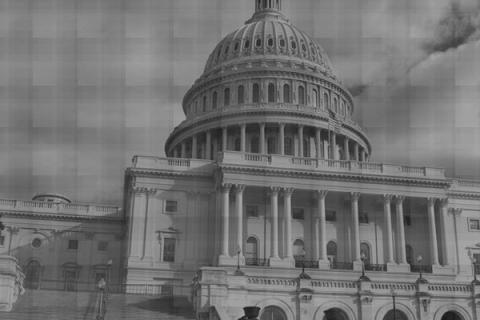California's fiscal future lookspositively dire. The budget deficit isexpected to soar to more than 40 billion (more than 1,000 per resident) overthe next year. It is the perfect stormof falling tax revenues caused by the popping of the equity and real estatebubbles, and soaring unemployment claims. But the Legislature and the governor are not the only ones to blame;just look at the results of the last election.
Voter ignorance is in large part to blame as well.
Admittedly, the state fiscal crunchwas not nearly as bad back in November of 2008, but it was still as bad as ithad ever been and experts knew things were going to get worse.
Yet even during a time of record deficits,California voters sought fit to approve four propositions that will directlyaggravate the deficit: propositions 1A, 3, 9, and 12. All together, those propositions will costthe state more than 24 billion in future spending. Of the 12 initiatives (some had negligiblefiscal effects) on the 2008 ballot, only 1 might have had a positive fiscalimpact: Proposition 5 (expanded parole for drug offenders), which failed by a60-40 margin.
The ballot initiative system iswrecking California's fiscal future. Theaverage voter does not understand the consequences of passing new spendingthrough ballot initiative and simultaneously having a constitutionally mandatedbalanced budget. What happens when theunstoppable force behind Props 1, 3, 9, and 12 meet the immovable object of thestate's balanced budget requirement? Thelargest state budget deficit, and soon the largest simultaneous budget cuts andtax increases in the history of all 50 states.
To make matters worse, the ballotinitiative system is being abused. Itnow has devolved into a grab-bag for special interests, and the solution forany powerful lobby that cannot get its way in Sacramento.
Prop 3, which floated bonds to financechildren's hospitals, was almost a carbon copy of Proposition 61, anotherbudgetary end-around, which passed in 2004. It was the same in virtually every respect, except of course for a moremodest price tag. The beneficiaries ofProposition 61 saw how easy it was to get their way, and did so again recentlywith Prop 3.
Props 3, 9, and 12 were goodexample of why the system needs to be reformed. On the surface, Prop 3 looked like a great cause, and it wasn'teasy for anyone to vote against money for children's hospitals. The commercials with Jamie Lee Curtis andnumerous sick children really put a human face on the issue. The sad reality is that there are a milliongood causes, and public money can't be used to support every one of them.
Leavingthe merits aside, Proposition 9 will cost the state an undetermined amount in extraprison costs by denying parole. Veteran'scare, typically a federal responsibility has been shifted to the state with Proposition12, which will cost 1.8 billion so that veterans can buy farms and homes.
These three propositions all had two things incommon: First, none had budget offsetsor tax increases built in, so they all are guaranteed to make the budget crisisworse. Jamie Lee Curtis bragged on television that Prop 3 " raise taxes, it saves lives." This is at best a half-truth. California requires a balanced budget. So by spending 2 billion over the next 30years on bonds and interest, that's 2 billion cut from somewhere else, or morelikely 2 billion more that has to be raised in new taxes.
So more accurately, Prop 3 does raise taxes,it just hasn't done it quite yet.
Secondly, they benefited verysmall constituencies at the expense of the average taxpayer. This reason is exactly how they got onto theballot in the first place. To get aninitiative onto the ballot, there is a paltry filing fee and a requirement forsignatures of 5 percent of the people who voted in the last election. That amounts to about 434,000signatures.
It seems like a lot, buttake for example Prop 3. Because thebenefits go to such a small segment of the state, it's easy to get everyone whostands to benefit to sign. After gettingthe signatures everyone involved in the health care field and their families,you have enough.
Propositions 6, 7, and 10were other examples of a small group trying to pry open the state's coffers fortheir own private gains. Luckily, thosemeasures failed, but given the relative ease of getting an initiative on theballot, they will certainly be back.
Big fiscal problems like the one wehave today will never be solved by a fickle and uniformed voting populace, onlyexacerbated. Our problems can only besolved by professional legislators. TheCalifornia Voter Guide summarizing all the 2008 ballot initiatives took morethan an hour to read. How many votersactually read through the entire thing? Unfortunately, most of voters made up their mind based on a 30 second TVcommercial. When the decisions are leftup to professional legislators whose job it is to know the issues, we canexpect to have fewer problems.
To prevent further fiscal damage, eitherthe threshold of 5 percent should be raised substantially, or ballot measures that arenot revenue neutral should be disallowed. I prefer the later. If specialinterests want to spend money on special projects, let them but make them payfor it at the same time. In the shortrun, it wouldn't do much, but in the long run, leaving the tough fiscaldecisions for the legislature and not the capricious populace will make thefiscal process much healthier.
Revenue neutrality is absolutelycritical for future ballot initiatives. Not too long ago, Proposition 63 (2004) increased taxes on incomes above1 million to finance state mental health services. Leaving aside merits, that proposal was farsuperior to any on the 2008 ballot because it actually paid for itself.
Two years from now, there will bemore spending proposals on the ballot, and California voters will continue tomake life impossible for the Legislature, unless the initiative process itselfis amended. It won't be easy, but itneeds to be done.
